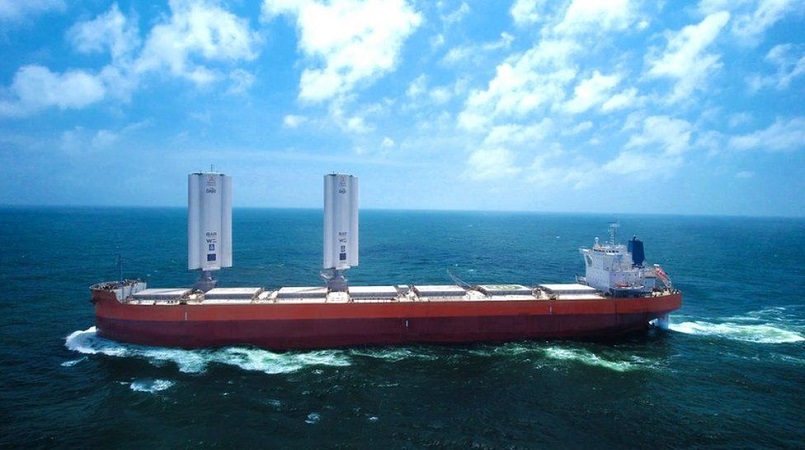
A cargo ship fitted with giant, rigid British-designed sails has set out on its maiden voyage.
Shipping firm Cargill, which has chartered the vessel, hopes the technology will help the industry chart a course towards a greener future.
The WindWings sails are designed to cut fuel consumption and therefore shipping's carbon footprint.
It is estimated the industry is responsible for about 2.1% of global carbon dioxide (CO2) emissions.
The Pyxis Ocean's maiden journey, from China to Brazil, will provide the first real-world test of the WindWings - and an opportunity to assess whether a return to the traditional way of propelling ships could be the way forward for moving cargo at sea.
Folded down when the ship is in port, the wings are opened out when it is in open water. They stand 123ft (37.5m) tall and are built of the same material as wind turbines, to make them durable.
Enabling a vessel to be blown along by the wind, rather than rely solely on its engine, could hopefully eventually reduce a cargo ship's lifetime emissions by 30%.
Jan Dieleman, president of Cargill Ocean Transportation, said the industry was on a "journey to decarbonise". He admitted there was "no silver bullet" - but said this technology demonstrated how fast things were changing.
"Five, six years ago, if you would ask people in shipping about decarbonisng, they would say 'well, it's going to be very difficult, I don't see this happening any time soon'," he told the BBC.
"Five years later, I think the narrative has changed completely and everybody is really convinced that they need to do their part - everybody is just struggling a little on how we're going to do this.
"That's why we've taken the role as one of the larger players to underwrite some of the risk, and try things, and take the industry forward."
